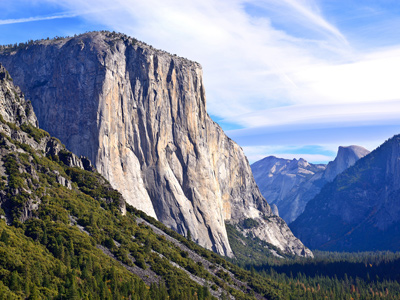Understanding physical geography and landforms is a crucial part of any GCSE geography syllabus. From mountains to beaches, the surface scenery is heavily influenced by the rocks beneath the surface and by what has happened to them. The first step to understanding the processes that give us the countryside we see around us is to discover the three main groups of rock and how they are related to each other.
The Earth started life as a collection of dust and gas orbiting the Sun. Gradually, gravity brought the materials together to form the early Earth. This was a high energy environment, chunks of rock from the size of dust particles to lumps that were many kilometres across crashed into each other. By the time that all of the dust, rocks and gas had collected into a single planet, it was a hot, volcanic place with a thin solid crust and molten centre.
The first rocks that formed were therefore igneous rocks. Igneous rocks are formed from molten material that has cooled and solidified. This molten material can either solidify at the surface of the Earth or beneath the surface, which gives rise to two types of igneous rock - extrusive and intrusive. This can be a little confusing at times but if you just remember that you go out through an exit so extrusive rocks have come out of a volcano.
When these first igneous rocks had formed, together with an atmosphere, weathering and erosion could take place. Weathering is the breaking down of rocks in situ (where they were formed) into smaller particles. This can be physical e.g. freeze-thaw weathering or it can be chemical e.g. attack by acid in rain and the atmosphere. As the rocks are weathered, wind and rain move the smaller particles downhill (erosion), eventually ending up in streams, then rivers. Through a variety of different processes, they are deposited at the edges of rivers, in lakes or the sea. Over millions of years, they are laid down in layers of sediment, compacted by the weight of overlying material and cemented by compounds deposited by circulating groundwater. The weathered materials have become a different type of rock called sedimentary.
Earth processes then caused these sedimentary rocks to be subjected to high temperatures and pressures. This changed them into new rocks. The process of change is called metamorphosis and so they are called metamorphic rocks. The important thing to realise is that, during this time of change, the sedimentary rocks had never been melted. If they had, and then solidified at a later date, they would have returned to being igneous rocks. Metamorphic rocks are usually hard and resistant to weathering, however, over long periods of time they do weather and are recycled as sedimentary rocks. If they are deeply buried in the Earth, they can melt and be recycled as igneous rocks.
The relationship between the three groups of rock is called the rock cycle and is a slow process that operates all the time. All rocks undergo weathering and can be changed into sedimentary rocks. All rocks can be subjected to high heat and pressure to become metamorphic rocks. All rocks can be melted to reform eventually as igneous rocks. When looking at a rock, you can only ever know its most recent history - the chemicals that make it up will probably have been through the rock cycle in different ways, many times over.








